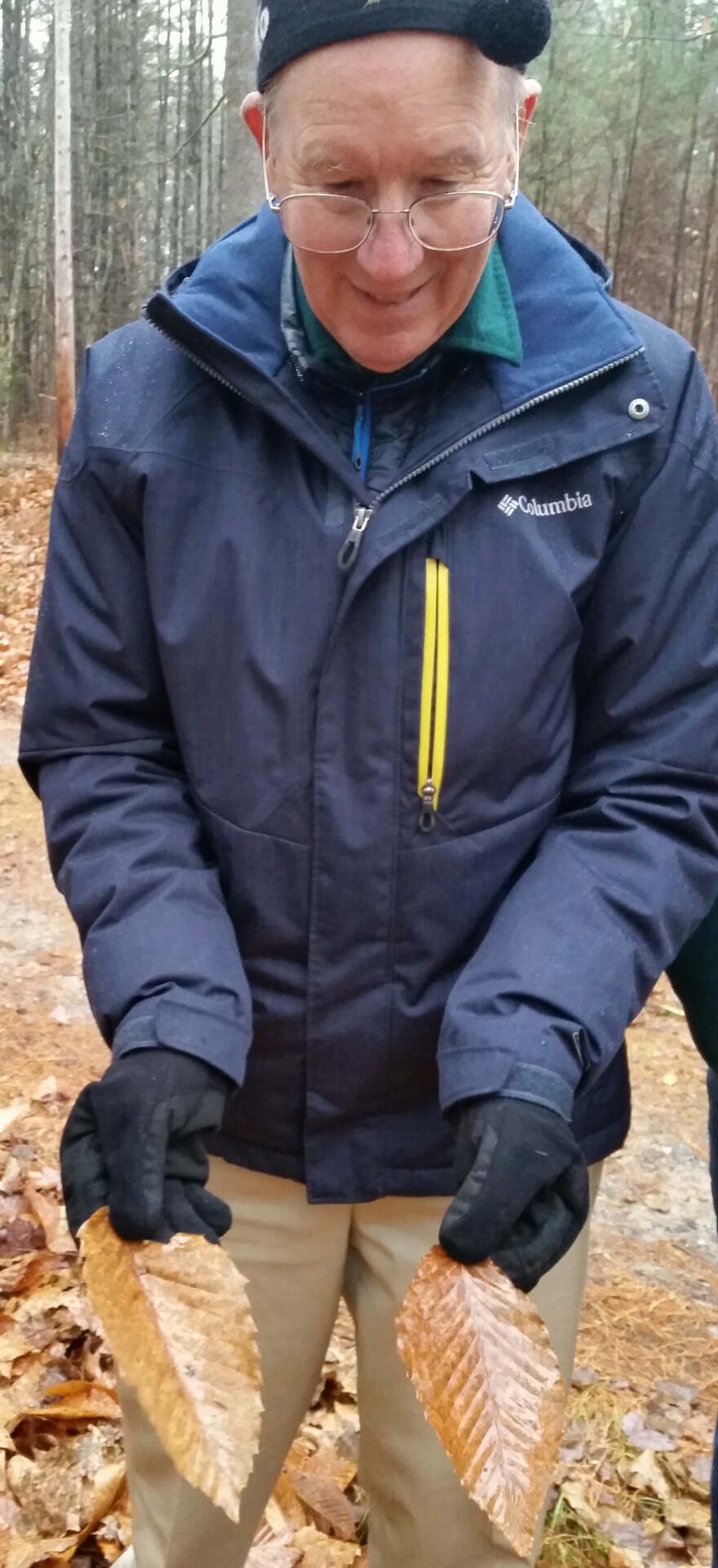Thanks to Nat King Cole, it's hard to think of chestnuts without conjuring an image of them "roasting on an open fire, Jack Frost nipping at your nose." These days, tough, you'll be hard-pressed to find anyone roasting American chestnuts over an open fire. The trees and the nuts have all but disappeared.
But now, scientists are excited about the discovery of an American chestnut tree in the woods of western Maine, a record-breaking tree that's giving them hope for the future.

Growing straight and tall, chestnut trees were once prized for timber. Vendors still roast and sell European chestnuts on the streets of Manhattan, fragrant aroma and all. But the American chestnut that once dominated the Eastern woodlands, from Maine to Georgia, was virtually wiped out by a blight that was accidentally introduced from Asia.
That's why on a recent, rainy December day, a gaggle of reporters, photographers and members of the American Chestnut Foundation trudged into the woods of Lovell, Maine, to confirm some crucial measurements of a chestnut tree growing in the wild.
As girth goes, this chestnut tree is not impressive: At 16.1 inches, it's on the skinny side. Except for its long, slender leaves, and spiny, urchin-like burs, it wouldn't stand out as distinctive in a forest lineup, especially this time of year, when both the leaves and the burs are littering the ground.
But Brian Roth, a forest scientist with the University of Maine, says when it comes to height, this American chestnut reigns supreme.
"We think it's around 100 years old," Roth says. "It's over 100 feet tall, which makes it the tallest tree that we know of in North America."
That's 115 feet tall, to be precise. But beyond its exceptional height, this chestnut is interesting to Roth and members of the American Chestnut Foundation because of its ability to survive. Surrounded by a cluster of equally tall pine trees, it was discovered in July from the air, distinguished by the large white flowers in its crown.

"Old-timers talk about the hillsides in the Appalachian Mountains being covered in flowers as if it was snow, and so we were able to key in on the particular week that these were blooming and ... find this tree," Roth says.
He says DNA from the tree will be preserved in a living gene bank. It's all part of a larger effort by the North Carolina-based American Chestnut Foundation to restore the chestnut to its historic range.
With the help of 6,000 devoted volunteers, the foundation has developed a complex breeding program to raise a hearty American chestnut that is resistant to the fungus and that can someday be reintroduced to the wild. (As The Salt has reported, separate efforts are also underway to create a genetically engineered American chestnut that's resistant to blight.)
Foundation president Lisa Thomson says the American chestnut is "an underdog. You know, everybody loves an underdog. And they see hope in the future, real promise of the future to bring this species back."
Thomson says she and her volunteers won't see a cathedral of chestnuts in the forest in their lifetimes, but their grandchildren will. And that's enough of a vision to keep them singing the chestnut's song.
Copyright 2021 Maine Public. To see more, visit Maine Public. 9(MDEwODI1MTE0MDEzNTk1NjQ4ODc4OTk0Ng004))



